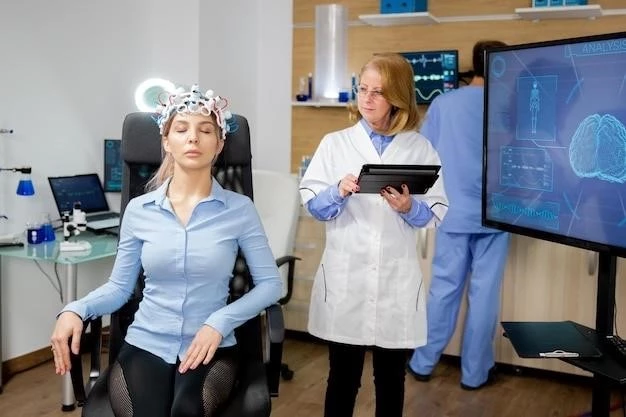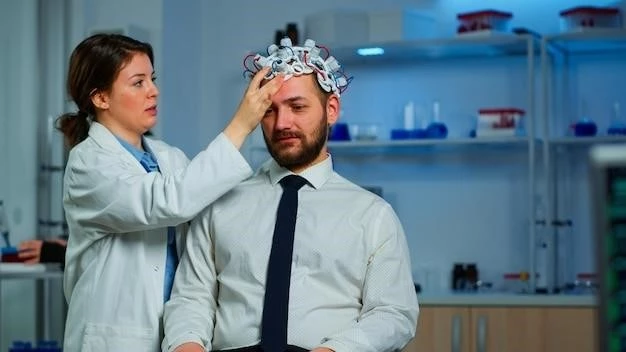Overview of Multifocal Motor Neuropathy
Multifocal Motor Neuropathy (MMN) is a progressive muscle disorder characterized by weakness in the hands, involving specific muscles with differences from one side of the body to the other.
Definition and Characteristics
Multifocal Motor Neuropathy (MMN) is a progressive muscle disorder characterized by weakness in the hands, involving specific muscles with differences from one side of the body to the other. It predominantly affects men and can lead to muscle wasting. MMN is a rare condition that impacts the motor nerves controlling muscle function and does not typically affect life expectancy or major bodily functions like breathing or swallowing.
Symptoms and Manifestations
Multifocal Motor Neuropathy (MMN) commonly presents with progressive weakness in specific muscle groups, particularly in the hands. This weakness can vary between sides of the body, leading to muscle wasting over time.
Muscle Weakness
Multifocal Motor Neuropathy (MMN) is characterized by progressive weakness in specific muscle groups, particularly in the hands. The weakness tends to vary between sides of the body and can lead to muscle wasting over time. This muscle weakness is a key feature of MMN and can impact daily activities.
Muscle Wasting
Muscle wasting is a common manifestation of Multifocal Motor Neuropathy (MMN), where affected muscles gradually weaken and decrease in size due to the progressive nature of the condition. This loss of muscle mass contributes to the overall weakness and functional impairment experienced by individuals with MMN.
Causes and Risk Factors
The exact cause of Multifocal Motor Neuropathy (MMN) is not well understood, but it is believed to involve the immune system attacking the body’s motor nerves. Risk factors may include genetic predisposition and certain environmental factors, though further research is needed to elucidate the precise mechanisms.
Immune System Involvement
Research suggests that Multifocal Motor Neuropathy (MMN) involves the immune system mistakenly attacking the body’s motor nerves, leading to progressive muscle weakness and wasting. This autoimmune component plays a crucial role in the development and progression of MMN.
Gender and Age Distribution
Men are almost twice as likely as women to develop Multifocal Motor Neuropathy (MMN), with the majority of individuals contracting the disease between the ages of 35 and 70. This condition is rare٫ affecting less than 1 person per 100٫000٫ and typically does not impact life expectancy or major bodily functions.

Diagnosis of Multifocal Motor Neuropathy
Diagnosing Multifocal Motor Neuropathy (MMN) typically involves nerve conduction studies and electromyography to evaluate motor nerve function and muscle activity. These diagnostic tests help differentiate MMN from other neuromuscular conditions.
Nerve Conduction Studies
Nerve Conduction Studies are commonly employed in the diagnosis of Multifocal Motor Neuropathy (MMN) to assess the function of motor nerves and muscle activity. These studies provide valuable insights into the nerve conduction velocities and can help differentiate MMN from other neuromuscular disorders.
Electromyography (EMG)
Electromyography (EMG) is a diagnostic procedure commonly used in the assessment of Multifocal Motor Neuropathy (MMN) to evaluate muscle activity and detect abnormalities in the electrical activity of muscles. This test aids in confirming the diagnosis of MMN and distinguishing it from other neuromuscular conditions.
Differential Diagnosis
When assessing Multifocal Motor Neuropathy (MMN), healthcare providers may distinguish it from conditions like Amyotrophic Lateral Sclerosis (ALS) based on specific clinical presentations and diagnostic findings.
Comparison with Amyotrophic Lateral Sclerosis (ALS)
When comparing Multifocal Motor Neuropathy (MMN) with Amyotrophic Lateral Sclerosis (ALS), healthcare providers focus on clinical progression rates, motor nerve involvement, and the presence or absence of upper motor neuron findings to differentiate between these two conditions accurately.
Distinguishing from Chronic Inflammatory Demyelinating Polyneuropathy (CIDP)
In differentiating Multifocal Motor Neuropathy (MMN) from Chronic Inflammatory Demyelinating Polyneuropathy (CIDP), clinicians focus on specific patterns of nerve involvement, response to treatments like immunoglobulins, and distinct electrophysiological criteria to accurately diagnose and manage these distinct neuropathies.
Treatment Approaches
Treatment approaches for Multifocal Motor Neuropathy (MMN) often involve medications targeting the underlying immune system dysfunction to manage symptoms effectively. Intravenous immunoglobulins and plasmapheresis may also be recommended to address motor nerve involvement.
Medications for Symptom Management
Medication plays a crucial role in managing the symptoms of Multifocal Motor Neuropathy (MMN) by targeting the underlying immune system dysfunction. These medications aim to alleviate weakness and improve muscle function in individuals affected by MMN.
Intravenous Immunoglobulins and Plasmapheresis
Intravenous Immunoglobulins and Plasmapheresis are treatment modalities commonly used in Multifocal Motor Neuropathy (MMN) to modulate the immune system response and manage motor nerve dysfunction. These interventions can help alleviate symptoms and improve quality of life in individuals with MMN.
Prognosis and Life Expectancy
Multifocal Motor Neuropathy (MMN) has a generally favorable prognosis, and individuals with the condition typically do not experience significant impacts on life expectancy or major bodily functions. The disease progression is often slow, and treatments can help manage symptoms effectively, improving the quality of life for those affected.
Impact on Daily Life
Multifocal Motor Neuropathy (MMN) can have varying impacts on daily life, depending on the severity of muscle weakness and functional limitations experienced by individuals. Adjustments in activities and support systems may be necessary to manage challenges associated with muscle weakness and its impact on daily tasks.
Survival Rates and Long-Term Outcomes
In Multifocal Motor Neuropathy (MMN), survival rates are generally favorable, and the long-term outcomes are characterized by a slow disease progression with treatments focusing on symptom management and maintaining quality of life. Despite its impact on daily activities, MMN typically does not significantly affect life expectancy or require major interventions.

Ongoing Research and Clinical Trials
Research on Multifocal Motor Neuropathy (MMN) continues to explore novel treatment approaches and investigate potential therapeutic targets. Clinical trials aim to advance our understanding of MMN pathophysiology and improve patient outcomes.
Drug Development for MMN
Research and clinical trials are focusing on drug development for Multifocal Motor Neuropathy (MMN) to discover new therapeutic options targeting the immune system dysfunction underlying the condition. These developments aim to enhance treatment efficacy and improve outcomes for individuals with MMN.
Investigative Techniques for MMN
Ongoing research explores innovative investigative techniques for Multifocal Motor Neuropathy (MMN) to enhance diagnostic accuracy and treatment effectiveness. Novel methods may include imaging studies, genetic analyses, and advanced neurophysiological assessments to further understand MMN pathogenesis and optimize patient care.
